marting81
Familiar Face
- Messages
- 87
- Location
- Guben, Germany
I think upper side is wild leather sew on felt.Martin, Is the top of the crown made of felt? Not sure about this one. It's later but maybe modified.
I think upper side is wild leather sew on felt.Martin, Is the top of the crown made of felt? Not sure about this one. It's later but maybe modified.




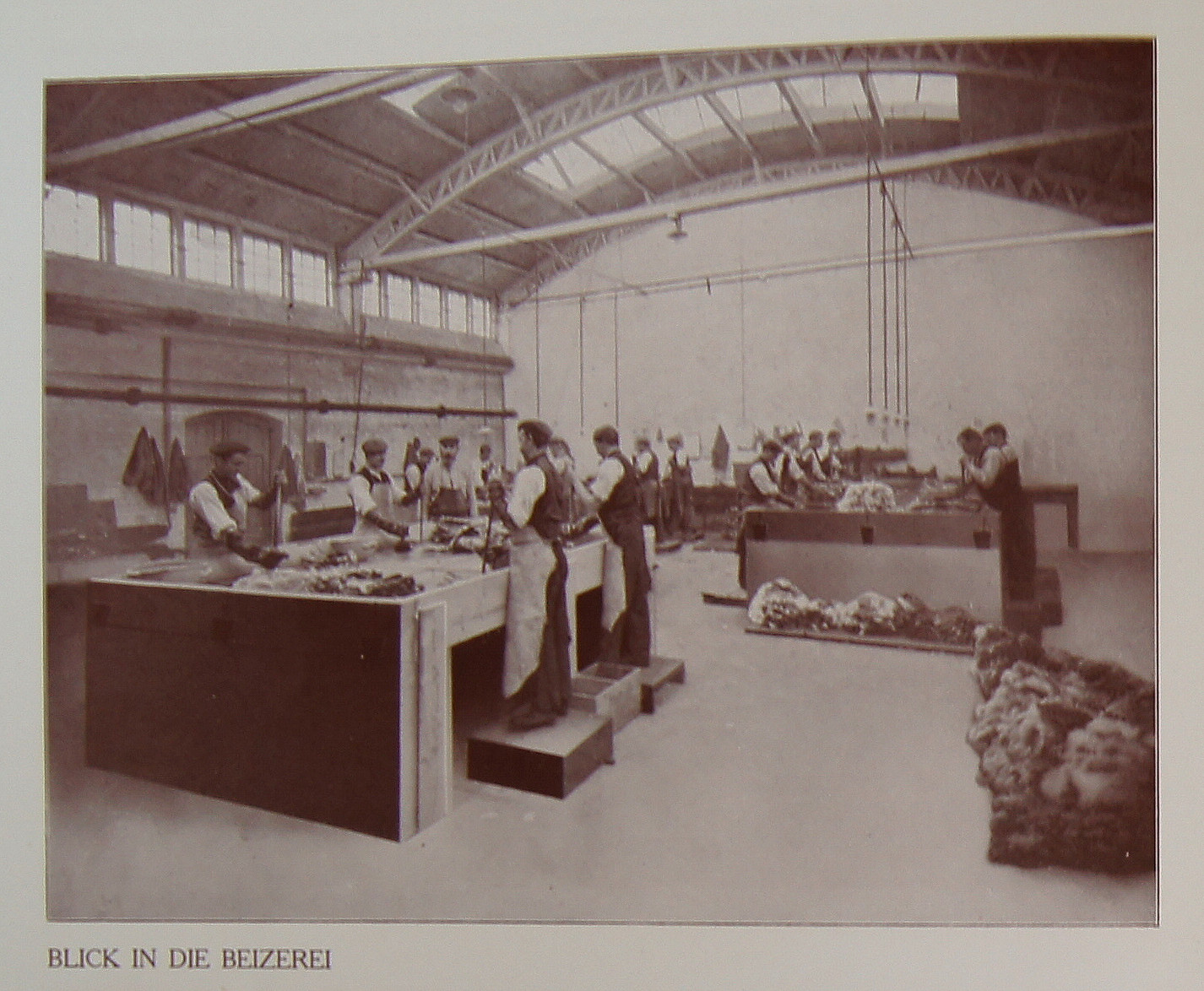

Great stuff as usual Steve!!!!Hare and Rabbit Skin Storage, Skin Pickling / Carroting, Skin Cutting, and Fur Sorting. Four Photographs from a German Hair Cutting Shop
This excerpt is from "25 Berlin - Gubener Hutfabrik (Hat Factory), Actiengesellschaft (Public or Private Company) vorm. A. Cohn, Guben, 1913". It covers Hare and Rabbit Skin Storage, Skin Pickling / Carroting, Skin Cutting, and Fur Sorting. There are four rare photographs from a German Hair Cutting shop. The third photo "German PICKLING /CARROTING SHOP" is especially rare. It shows the application of Nitrate of Mercury by Hand Brushing. You might need to click on the photos to make them larger.

The production of hair hats is carried out in a completely separate establishment from the wool hat production. If we also pay a brief visit to this department, we first enter the raw materials store, where many types of hair are stacked up, mostly neatly packed in paper packages. The packets are labeled on the outer wrapping with the name of the quality they contain. We find different types of hare hair, rabbit hair, beaver and nutria.
The most important haircutting factories are located in Germany, France, England and Belgium. Here, skins from all over the world come together, are prepared, trimmed and sorted. In its original state, as it is cut from the hide, the hair is not suitable for the manufacture of hats because it lacks felting and fulling properties. Rather, it must first undergo the manipulation of mordanting before it acquires this property, but then to a greater extent than wool.

For this purpose, the hair on the skins is carefully brushed up to the root with a solution of mercury and nitric acid using hand brushes or machines with cylindrical brushes. The skins are then dried in heating chambers specially constructed for this purpose, then remoistened and carefully smoothed to smooth out any folds in the skin. - The skins prepared in this way then pass through a machine in which the fur is cut into narrow strips between cylinders equipped with sharp knives, without tearing the loosely connected hair fur. The pieces of fur fall down and the blanket of hair, cut to the root, emerges at the end of the machine and lies on a thin metal plate. From here it is removed by trained workers and cut into individual parts of the fur, because the back has the finest hair, while the sides and belly have smaller hairs, which vary considerably in price. For example, the back of the hare fetches five times the price of the hair from the belly. With the enormous boom in hair that has occurred in the last year, which has caused unprecedented prices, the backs are getting bigger and bigger and the smaller parts are getting smaller and smaller. This huge price increase is partly due to the fashion for velour-like hats for men and women, but also to the widespread use of animal skins as trimming material for clothing in recent years.
Below are 4 photographs from a German Hair Cutting shop.

THE SKINS ARE CUT OPEN AND CLEANED

STORAGE OF SKINS PREPARED FOR STAINING

LOOK INTO THE PICKLING /CARROTING SHOP (Application of Nitrate of Mercury by Hand Brushing)

THE HAIR IS CUT FROM THE SKINS
Mark, Thank you! This is the first photo I have encountered that documents the application of nitrate of mercury by hand brushing.Great stuff as usual Steve!!!!
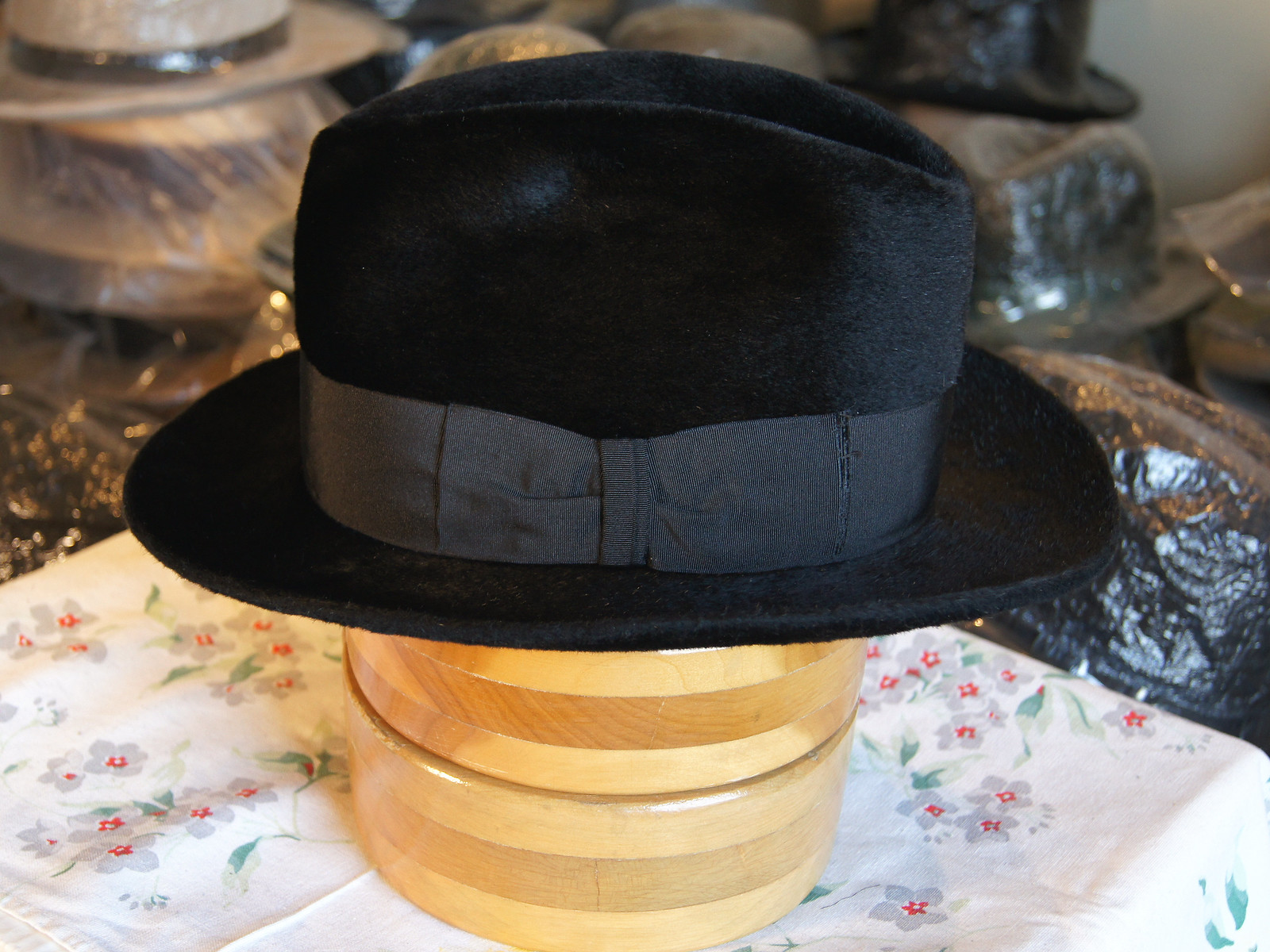





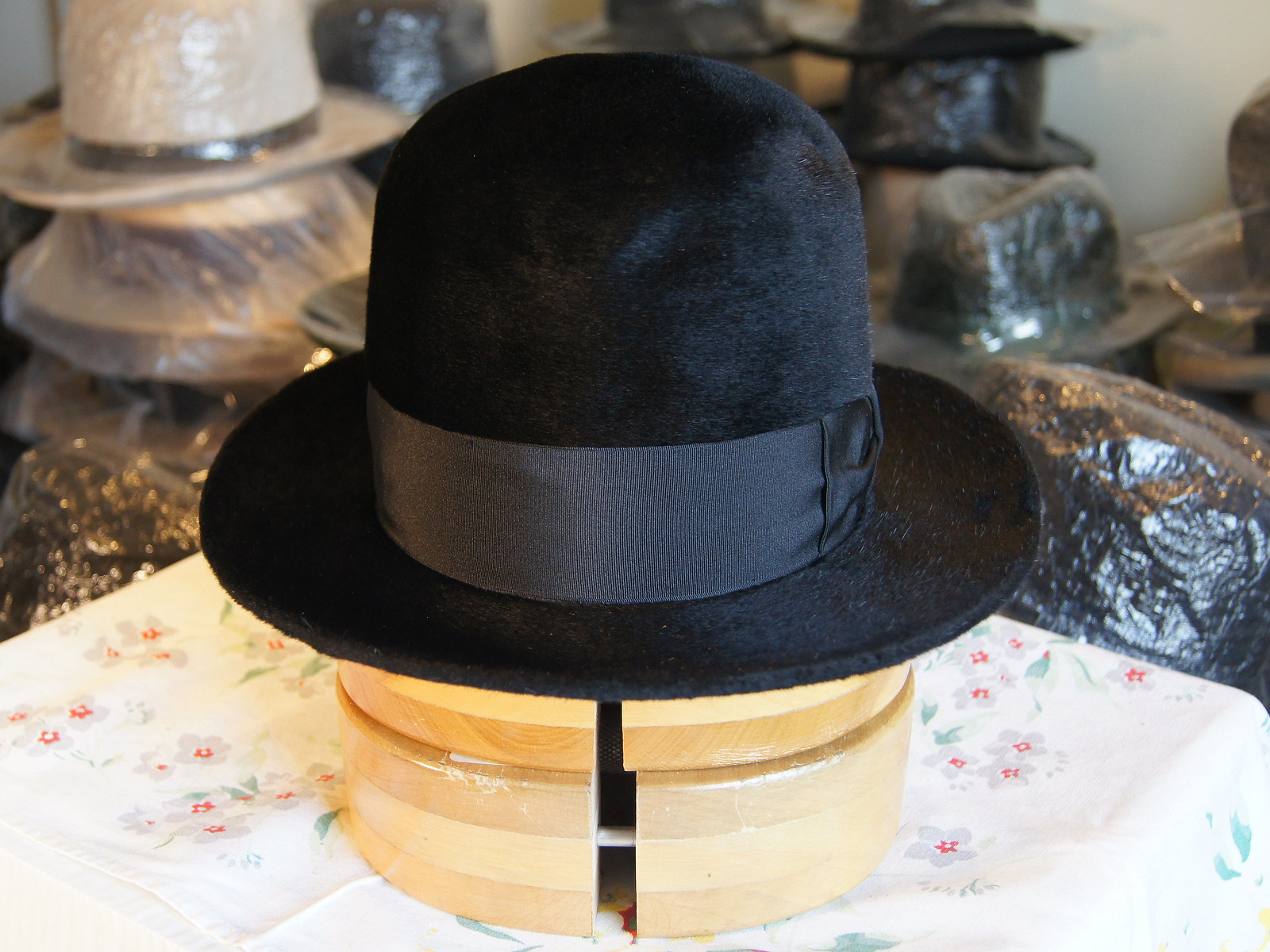
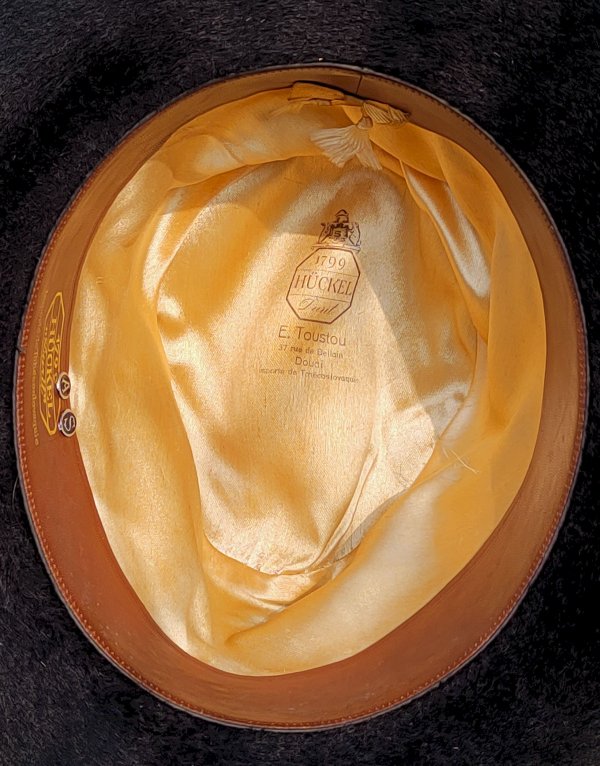
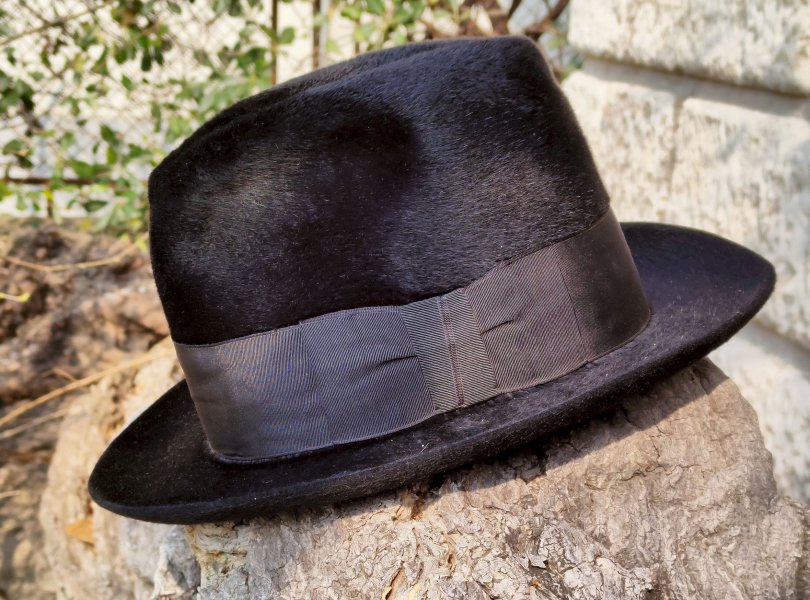
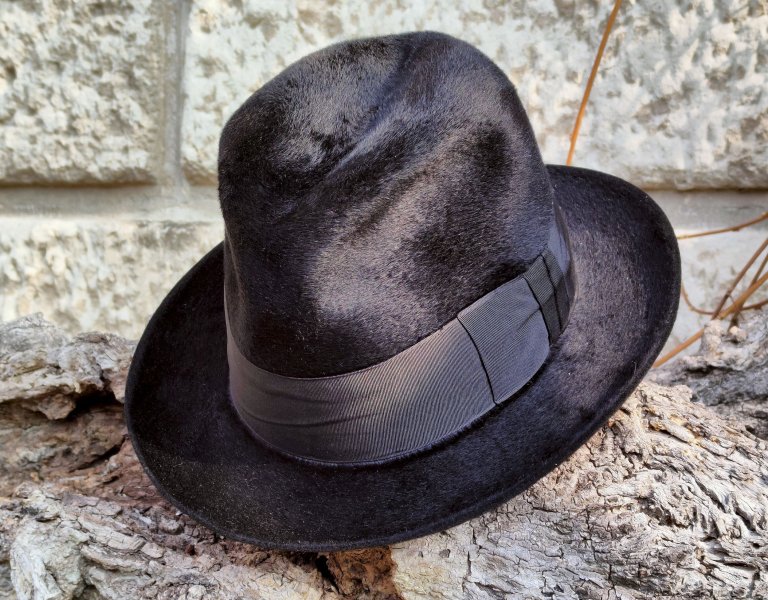
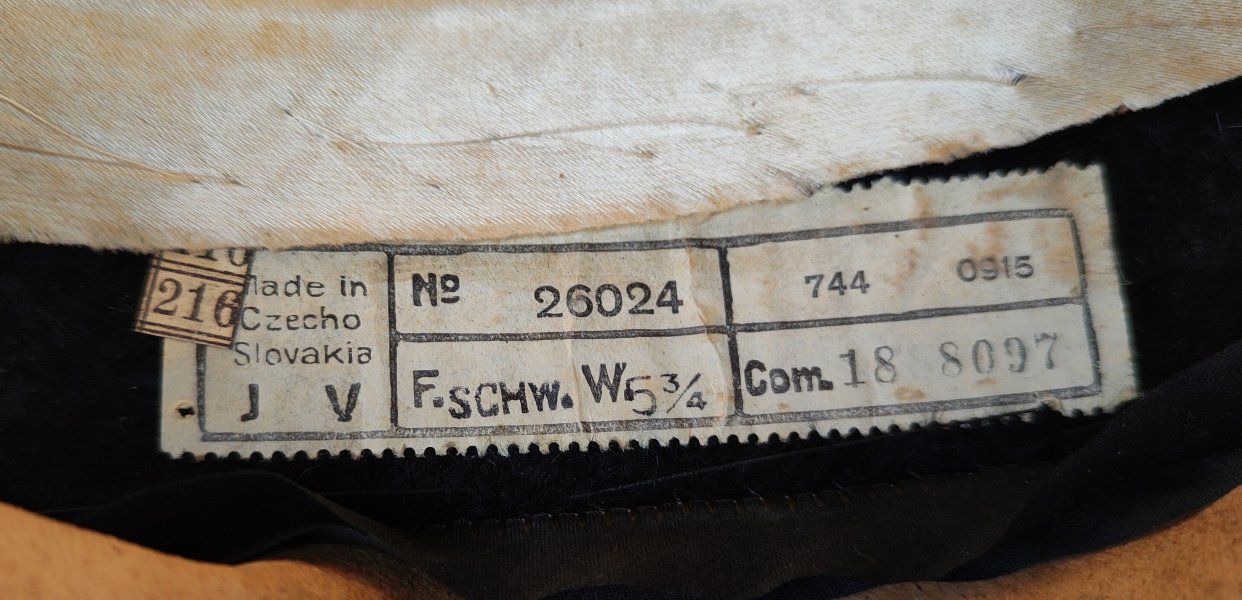
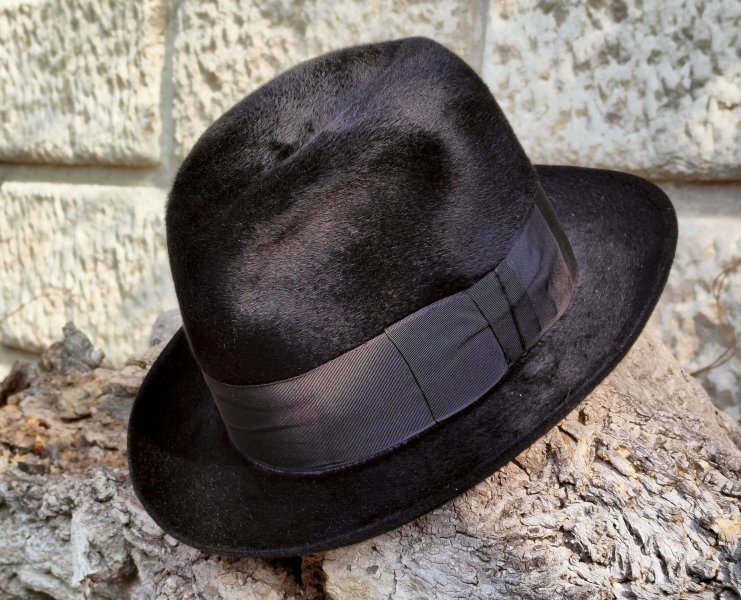
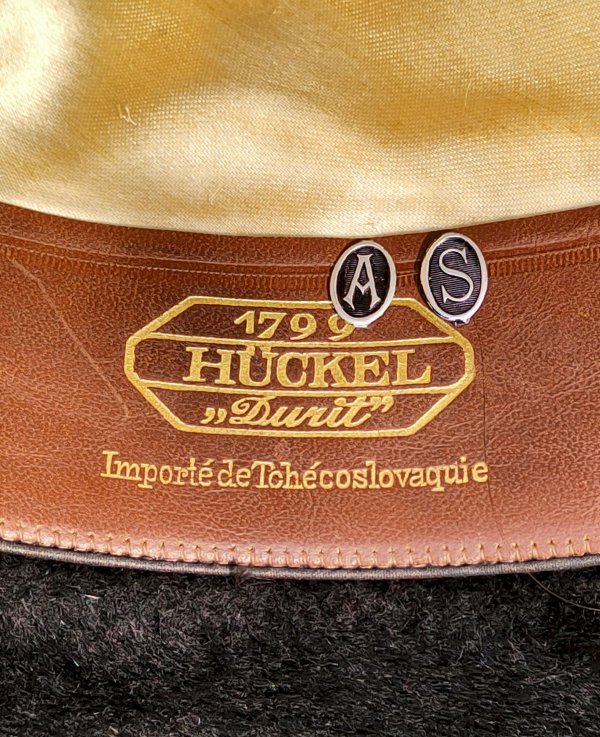
Daniele, This is a really fantastic find! The Velour has such high gloss and is in great condition. This is the first 1/4 sizing I have seen for a JHS Soft Felt Hat. All the others have been Stiff Felt Hats and Top Hats. The paper label has J V which is Jota Velour which so far has always been the case with French market JHS "Durit" models. It has a "JHS Soft Felts Post WWI Type 8" paper label.Latest arrival among Central European hats made with velour felt.

It is a Huckel 1799 "Durit" made for the French market.

In recent times I have had various velour hats in my hands and this is an example of lightness compared to others that have arrived in my collection.

The felt is dense and the pile is of medium length. It is malleable and takes shape without steam.

The storage conditions are excellent, without any defects. The "old" one has been preserved very well

The size is a "rarity" because it is difficult to find a 5 3/4 which is a narrow 59 centimeters

The measurements of the Huckel 1799 - Durit are as follows: the raw brims are 6 centimeters, the ribbon always matching the felt is 5.5 centimeters high, and the open crown is 15 centimeters.

I hope to continue finding hats of this quality... they make me happy.
Thanks Steve for your specification about felts, size and age of the Huckel DuritDaniele, This is a really fantastic find! The Velour has such high gloss and is in great condition. This is the first 1/4 sizing I have seen for a JHS Soft Felt Hat. All the others have been Stiff Felt Hats and Top Hats. The paper label has J V which is Jota Velour which so far has always been the case with French market JHS "Durit" models. It has a "JHS Soft Felts Post WWI Type 8" paper label.
Daniele, Thank you!Thanks Steve for your specification about felts, size and age of the Huckel Durit

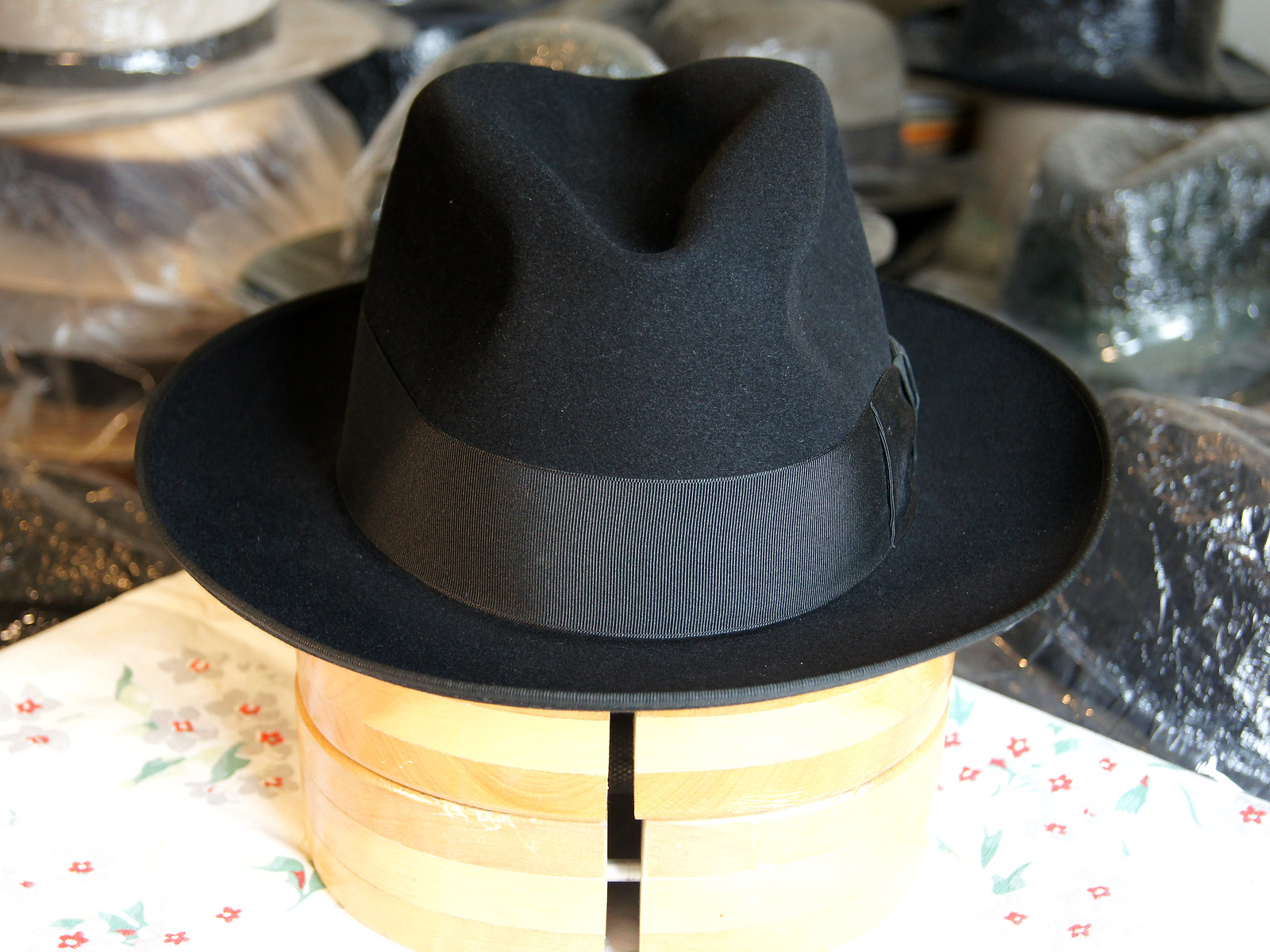



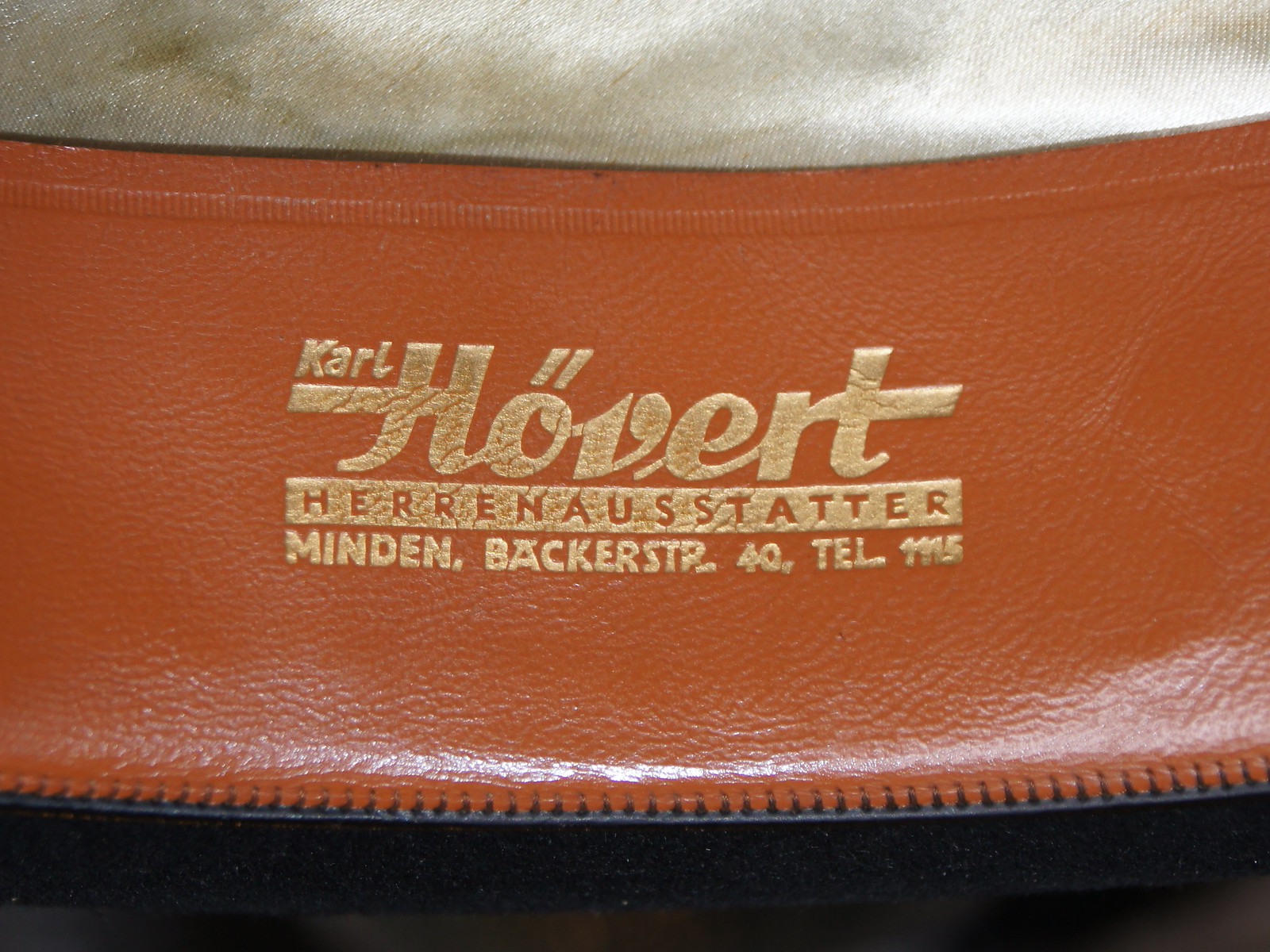


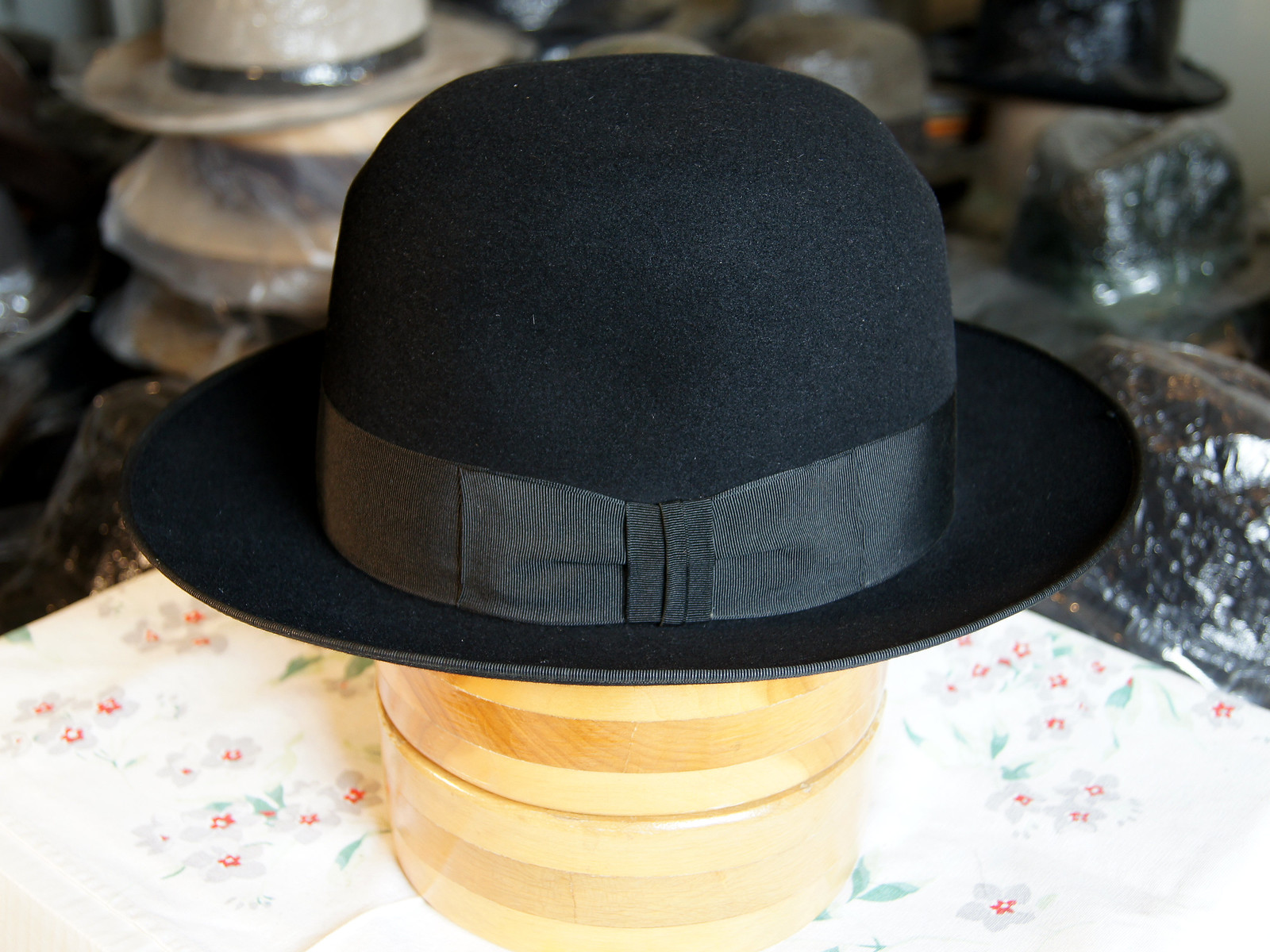


 John Lofgren Monkey Boots Shinki Horsebuttt - $1,136 The classic monkey boot silhouette in an incredibly rich Shinki russet horse leather.
John Lofgren Monkey Boots Shinki Horsebuttt - $1,136 The classic monkey boot silhouette in an incredibly rich Shinki russet horse leather.  Grant Stone Diesel Boot Dark Olive Chromexcel - $395 Goodyear welted, Horween Chromexcel, classic good looks.
Grant Stone Diesel Boot Dark Olive Chromexcel - $395 Goodyear welted, Horween Chromexcel, classic good looks.  Schott 568 Vandals Jacket - $1,250 The classic Perfecto motorcycle jacket, in a very special limited-edition Schott double rider style.
Schott 568 Vandals Jacket - $1,250 The classic Perfecto motorcycle jacket, in a very special limited-edition Schott double rider style. 




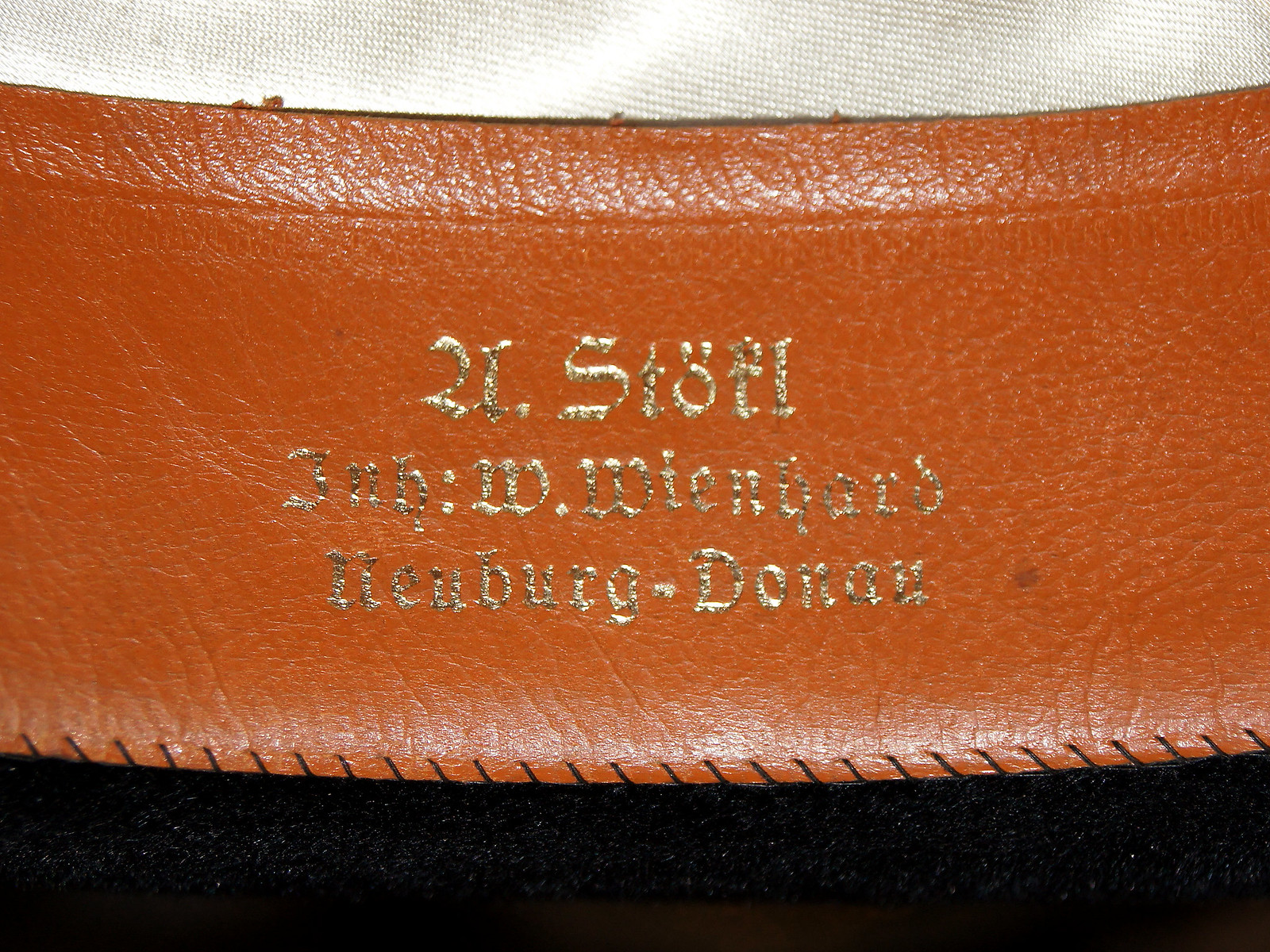






Martin, Super find! It's in great condition too. Interesting that the two liners have a similar diagonal stripes but this latest "Helios" stripe matches the outer liner color. I checked and these are the only two C. G. Wilke Stiff Felts with diagonal liner stripes. Would it be possible to post photos of the front and bow side of this latest "Helios"?C.G. Wilke - Helios vs. C.G. Wilke - Helios
First one: https://www.thefedoralounge.com/threads/german-austrian-hutmachers.32103/post-3024010
View attachment 598324 View attachment 598325 View attachment 598326 View attachment 598327 View attachment 598328 View attachment 598329 View attachment 598330 View attachment 598331 View attachment 598332 View attachment 598333
Wonderful find, Steve. Very nice looking hat of a rare brand. And in excellent condition too.Koch - Velour "Secunda", 58cm possibly later 1950s. Otto Koch Miesbacher Velourhutfabrik lasted to the mid 1960s. This is a very nice Close Cropped Velour that is excellent overall condition.








Open Crown


Natural Light


Excellent finds, Martin. These liners are outstanding.C.G. Wilke - Helios vs. C.G. Wilke - Helios
First one: https://www.thefedoralounge.com/threads/german-austrian-hutmachers.32103/post-3024010
View attachment 598324 View attachment 598325 View attachment 598326 View attachment 598327 View attachment 598328 View attachment 598329 View attachment 598330 View attachment 598331 View attachment 598332 View attachment 598333
Stefan, Thank you!Wonderful find, Steve. Very nice looking hat of a rare brand. And in excellent condition too.
Martin, Thank you for posting the additional photos. I am going post all the photos on my website.